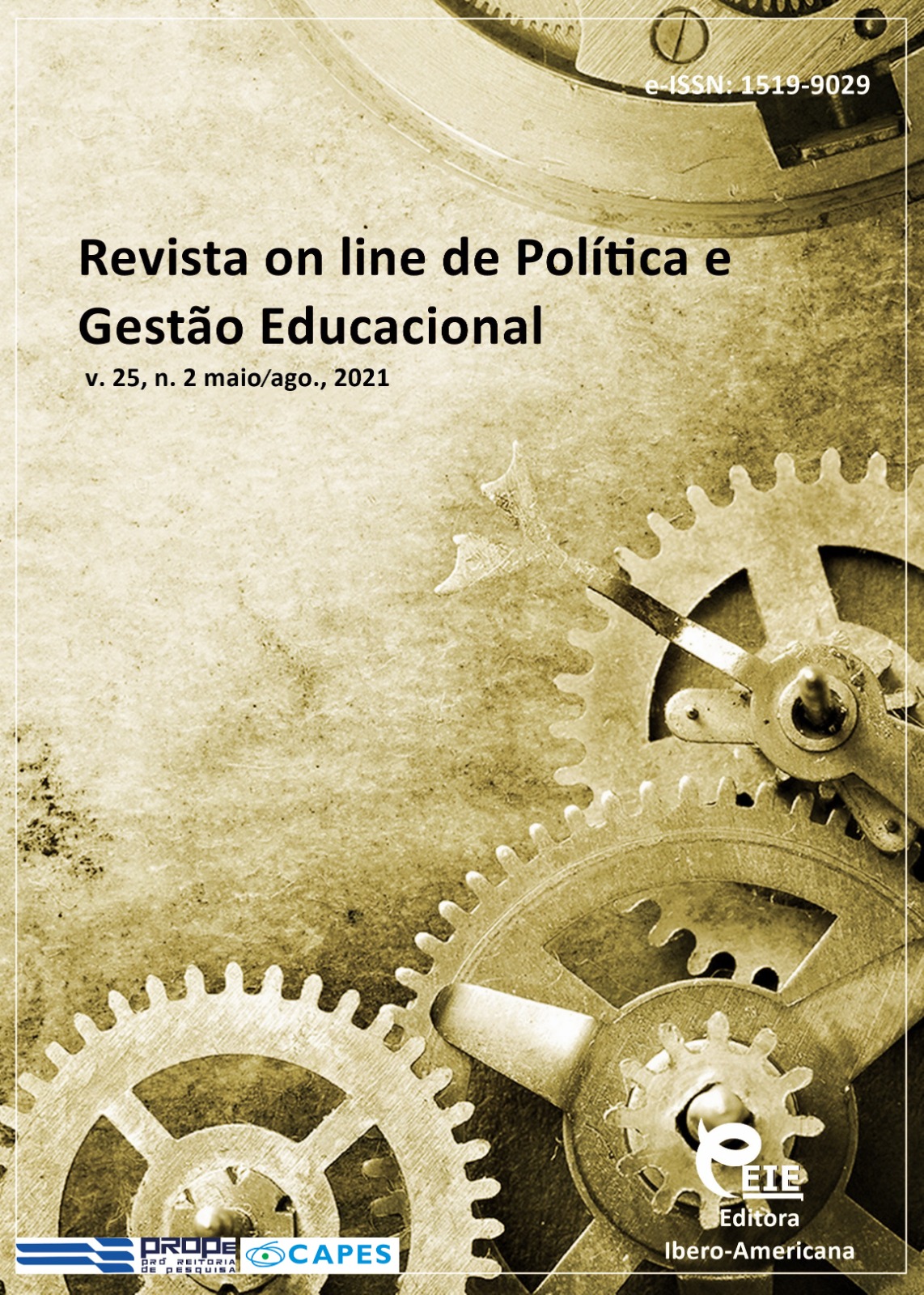Teaching basic concepts of cryptography in professional high school
DOI:
https://doi.org/10.22633/rpge.v25i2.14469Keywords:
Practices , Teaching , Learning , CryptographyAbstract
The cryptography is present in several operations performed daily by people, such as online shopping or in dialogues using computer equipment and the Internet as a proxy. Although cryptography is very important in the contemporary context, the teaching of the cryptography subject is new for students at professional high school. In this regard, one of the biggest challenges is to motivate students in using the cryptographic methods in the classroom. The objective of this work is to investigate the use and learning of cryptography by students at professional high school. For this purpose, the Survey methodology was used with self-evaluative questions about the motivation, understanding and the use of computational tools containing basic cryptography concepts. An analysis of the responses suggests that most students find the cryptography subject difficult to learn, but all of them were able to practice and learn at least one of the cryptographic techniques taught.
Downloads
References
ABNT – ASSOCIAÇÃO BRASILEIRA DE NORMAS TÉCNICAS. ABNT NBR ISO/IEC 27001: Tecnologia da informação - Técnicas de segurança - Sistemas de gestão de segurança da informação - Requisitos. Rio de Janeiro, RJ: ABNT, 2013.
ALVARENGA, L. G. Criptografia clássica e moderna. Clube de Autores, 2017.
BASTA, A.; BASTA, N.; BROWN, M. Segurança de computadores e teste de invasão. São Paulo, SP: Cengage Learning, 2014.
BELLARE, M.; ROGAWAEY, P. Introduction to modern cryptography. Davis, United States of America: University of California at Davis, 2005. Disponível em: https://web.cs.ucdavis.edu/~rogaway/classes/227/spring05/book/main.pdf. Acesso em: 06 fev. 2019.
CERT – CENTRO DE ESTUDOS E TRATAMENTO DE INCIDENTES DE SEGURANÇA NO BRASIL. Cartilha de Segurança para Internet versão 4.0. São Paulo, SP: Comitê Gestor da Internet no Brasil, 2012. Disponível em: https://cartilha.cert.br/livro/cartilha-seguranca-internet.pdf. Acesso em: Acesso em: 04 abr. 2019.
FINNEY, H. et al. OpenPGP Message Format. RFC 4880. 2007. Disponível em: https://datatracker.ietf.org/doc/html/rfc4880. Acesso em: 23 maio 2019.
GESSINGER, R. M. Atividade em grupo. In: GRILLO, M. C. et al. A Gestão da Aula Universitária na PUCRS. Porto Alegre, RS: EdiPUCRS, 2008. p. 109-118.
GIANOTTO, D. E. P.; DINIZ, R. E. S. Formação inicial de professores de biologia: a metodologia colaborativa mediada pelo computador e a aprendizagem para a docência. Revista Ciência & Educação, v. 16, n. 3, p. 631–648, 2010. Disponível em: http://www.scielo.br/j/ciedu/a/m8BHLB9MbCb5zYhxKsVvcsk/abstract/?lang=pt. Acesso em: 06 jun. 2019.
LAUDON, K.; LAUDON, J. Sistemas de informações gerenciais. São Paulo, SP: Pearson Prentice Hall, 2014.
MASSETO, M. T. Competências pedagógicas do professor universitário. São Paulo, SP: Summus Editora, 2012.
OLEJAR, D.; STANEK, M. Some aspects of cryptology teaching. In: IFIP WG 11.8 1st World Conference on Information Security Education WISE1. 1999. p. 1-9. Disponível em: http://citeseerx.ist.psu.edu/viewdoc/download?doi=10.1.1.21.4050&rep=rep1&type=pdf. Acesso em: 06 ago. 2019.
OPENPGP. OpenPGP. 2018. Disponível em: https://www.openpgp.org. Acesso em: 20 maio 2019.
SILVA, V. et al. Mineração de dados utilizando análise de redes social para identificar tendências de participação em aulas presenciais. In: BRAZILIAN SYMPOSIUM ON COMPUTERS IN EDUCATION, 28., 2017, Recife. Anais […]. Recife, PE, 2017. p. 1467-1476. Disponível em: https://br-ie.org/pub/index.php/sbie/article/view/7677. Acesso em: 30 set. 2020.
SONG, X.; DENG, H. Taking flexible and diverse approaches to get undergraduate students interested in cryptography course. In: First International Workshop on Education Technology and Computer Science. 2009. v. 2, p. 490-494. Disponível em: https://ieeexplore.ieee.org/document/4959085. Acesso em: 09 abr. 2019.
STALLINGS, W. Criptografia e segurança de redes: princípios e práticas. 6. ed. São Paulo, SP: Pearson Education do Brasil, 2015. 578 p.
VERACRYPT. Veracrypt: versão 1.18 de 2018. Disponível em: https://www.veracrypt.fr/en/Home.html. Acesso em: 20 maio 2019.
Published
How to Cite
Issue
Section
License
Copyright (c) 2021 Revista on line de Política e Gestão Educacional

This work is licensed under a Creative Commons Attribution-NonCommercial-ShareAlike 4.0 International License.
Manuscritos aceitos e publicados são de propriedade da Revista on line de Política e Gestão Educacional. É vedada a submissão integral ou parcial do manuscrito a qualquer outro periódico. A responsabilidade do conteúdo dos artigos é exclusiva dos autores. É vedada a tradução para outro idioma sem a autorização escrita do Editor ouvida a Comissão Editorial Científica.











